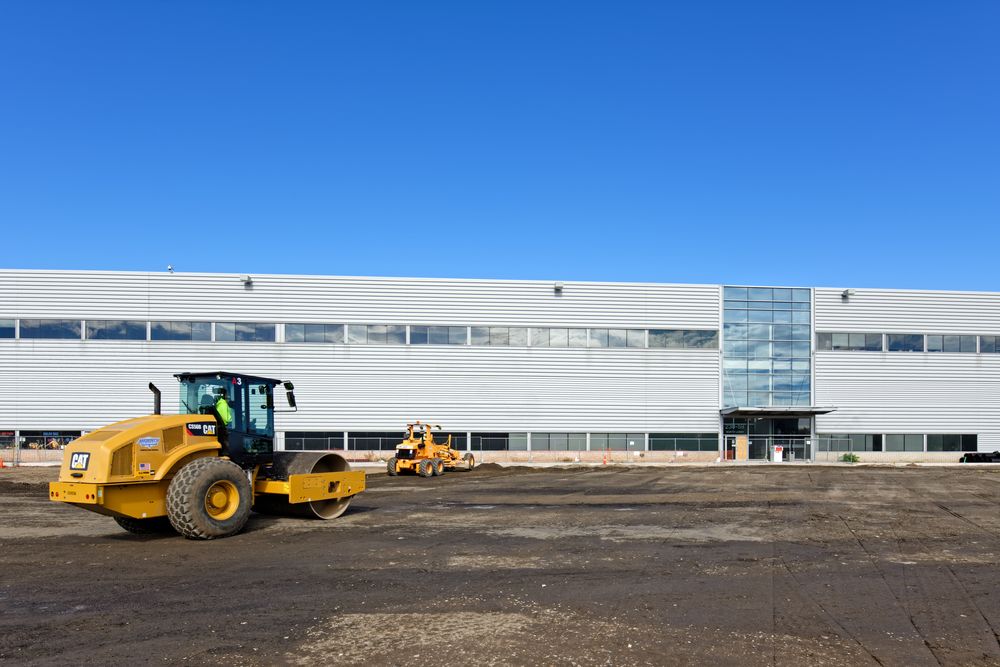
Maintenance at logistics real estate properties requires resurfacing asphalt lots about every 15 years because of normal wear and tear. Historically, the process required a full-depth replacement, which involved grinding up and replacing an entire lot with new asphalt. The old material was removed with multiple truckloads that generated extra costs for the project, produced excessive transportation-related carbon emissions and disrupted nearby operations. Up to 30 percent of the original asphalt might have gone back to a plant for recycling, but typically around 60 percent was transported to a landfill.
Full-Depth Reclamation
Fortunately, a modern recycling practice, full depth reclamation (FDR), reduces costs, emissions and disruption. The process grinds old asphalt onsite and then mixes it with cement and the existing soil base to create a new stronger base, which eliminates the need to truck material offsite. FDR recycling is having a positive impact in multiple markets for Prologis.
Prologis Atlanta—Early Adopter of Asphalt Recycling
Prologis has been recycling asphalt in Atlanta for two decades and completed six FDR projects there in the past five years. For a typical 4,000 square yard lot in Atlanta, FDR required only 28 truckloads of material to be removed from the site, and costs averaged $28.55 per square yard. The older remove-and-replace process would have required 130 truckloads and cost the company $54 per square yard. FDR eliminated 102 truckloads and saved $25.45 per square yard. It also lessened the impact on site operations because FDR requires less space and time to perform.
Prologis New York—FDR Helps With Debris Screening
New York is another market that has achieved significant cost savings from using FDR in maintenance projects. Prologis recently recycled approximately 10,000 cubic yards of asphalt from an 11,000 cubic yard lot. FDR saved 40 percent on the cost of new asphalt and reduced downtime for the facility.
Onsite recycling in this project was also important because the logistics center was built on a former dump site, and the original base material was mixed with debris that the asphalt facility would not accept. Instead of hauling all that to a landfill, FDR allowed approximately 17,000 cubic yards to be screened and used for fill material onsite.
FDR requires pavement contractors to invest in special equipment, but the reclamation process is expected to become more prevalent as the importance of recycling, environmental protection and minimizing business interruptions increase.



